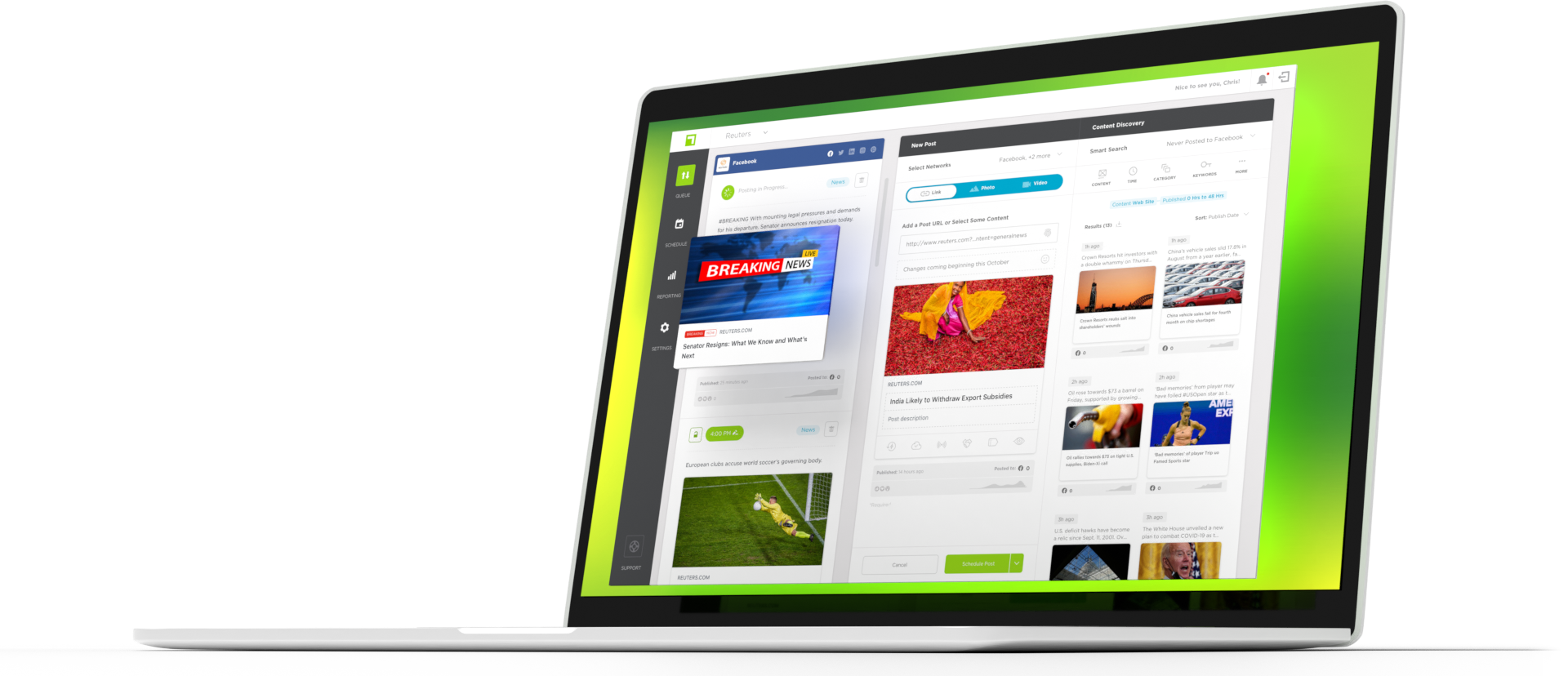Shares are one of the more valuable KPIs for many publishers. Increasing social media shares can raise your visibility on a platform, broaden your audience, drive traffic, and increase pretty much every other social media metric. So how do you make them happen?
A lot of this strategy depends on which platform you’re using, so let’s break it down by each of the major platforms.
Facebook is probably still one of your more significant traffic drivers. Shares are easily trackable (for the most part), and you can quickly boost posts and help push content. Here are some tips for Facebook:
Write a solid headline.
Headlines can be a lot more complicated than you think. Some things to consider:
- What’s your hook?
- Know whom you are speaking to
- What is the story actually about?
- What has worked before?
- Define your voice
- Where are you from?
- What is your mission?
- How formal do you want to sound?
- Do you have a target audience?
- What are you an authority on?
- Think in terms of SEO
- Is it interesting? Are you giving people a reason to click? Is it just boring?
Write compelling post copy.
Post copy is what is going to get you the coveted “thumb stop” from your audience. You want them to stop scrolling, so you have to create copy that will make them pay attention. Some things that may help:
- Know your voice.
Be consistent with your voice.
-
- Who is interacting with your audience? How formal/informal are you? Do you have a POV?
- Whom are you speaking to?
- Create personas to help you.
Give members of your audience a name, age, and any other demographic information you deem relevant. It will help you determine what matters to them.
- Pull a story snippet.
It should be the most intriguing or mysterious part of the story – something that will make people want to read the rest.
- Use emojis.
You can tell entire stories with emojis if done well. You can also use them to set the tone – the story is scary / shocking / heartbreaking / hilarious; emojis can help you select the tone and likely stand out in a sea of text and photos.
- Have an ask.
What do you want your audience to do? Ask them a question. Give them information to share. Be creative in your delivery.
Examples:
-
- Did a local landmark close? Ask people to share memories.
- National pet day? Ask people to share photos of their animals.
- Running a weekly event calendar story? Ask people about their weekend plans.
- Sometimes less is more.
Yes, occasionally, one-word setups are the best. “Tragic.” or “Heartbreaking.” can go a long way, but make sure that the story is powerful enough to deliver.
Images matter. A lot.
There is a small checklist you need when you are choosing images. I’ll make it as easy as I can.
- Can you legally use the image? Seriously, don’t get sued over this. Make sure that you have full access to any content you are using. You cannot swipe a photo from Google and plug it into your piece.
- Is the resolution good? Make sure the image is high enough quality to look clear on any device.
- Is the aspect ratio correct? If you need more information on aspect ratios for each platform, go here.
- Is it relevant to the story?
- Is it interesting enough to get attention?
Instagram is a different beast. You likely aren’t looking to drive massive website traffic from Instagram, even though it is possible to get some clicks. On Instagram, branding is the name of the game. So how do you get shares?
The only in-platform share option is to share a post to your stories. The sort of content that shares best is content that makes people have a strong resonance or passion response. The content that gives voice to a thought or idea that’s already in their head.
From a technical standpoint, Instagram has been making shares more intentional within the platform, incorporating TikTok-like features like picture-in-picture.
From Tech Crunch:
Content reshared through the sticker will appear against an existing Story, which could encourage more personalization. For example, when users add a post or Reel to their story, that content generally stands alone against a plain background. The new reshare sticker adds a new way for people to contextualize content they’re resharing and makes those posts feel a bit less static (think retweets with a comment rather than straight-up retweeting a stranger into your feed).
Some other things to consider:
- Are you posting enough videos? The platform prioritizes content and is clear that they are no longer an “image sharing app.” Make sure your range is diverse.
- Refer to the image section for Facebook.Images are critical. Make sure it’s high quality, compelling, and adequately sized.
- Use the captions. Compliment your image with text.
- Hashtags matter. Join existing conversations and reach audiences far beyond your own. You can use up to 30 hashtags on Instagram. You don’t need to use that many every time (or ever, really) but make sure that you choose them effectively—more on hashtags here.
Shares on Twitter are called Retweets. Users can quote the original tweet or straight retweet. The quote tweets tend to be more personal, as users can add their takes to the original content.
On Twitter, humor and wit are the names of the game. You have limited space, so it’s essential to use it well. Here’s a list of some things to consider when getting shares on Twitter:
- Is the link appropriately formatted?If the link pulls through a dead image or wonky headline, it’s just going to clutter up the feed.
- How strong is the headline? Twitter users very commonly respond to headlines, so you want to make sure the headline is accessible. All of the rules for headline writing apply.
- Use 1-3 relevant hashtags.Hashtags are used differently on Twitter than they are on Instagram. Read more here.
- Is your point clear?Brevity is essential on a platform with low character limits. You want to be sharp, concise, and leave little room for interpretation unless you’re trying to start a social media war. That’s on you.
- Engage, engage, engage.More than any other platform, Twitter is a real-time conversation. To get people to share and Retweet you, you have to do the same for them.
Schedule a demo today learn how our tool can automate your social media posting seamlessly. Be sure to sign-up for our newsletter to get all your social media news!

